Grilled Chipotle Flank Steak: Spicy, Tender, Perfectly Cooked
Sometimes you want a big thick steak on a plate. But sometimes, you just want some solid, beefy flavor, and for that, you want a flank steak. Flank steak is a delicious, meaty cut that delivers big on taste while coming in short on price. And when it’s done properly, it’s almost as good to eat as any high-priced cut.
Today we’ll be going over a recipe for chipotle grilled flank steak that is based on one from The Sauce at All Things BBQ. This straightforward recipe demonstrates the strength of flank steak and gives you a delicious way to use your Thermapen®.
Contents:
What is flank steak?
Flank steak comes from the rear-bottom portion of the steer’s belly. Its proximity to the legs means that it is a well-used muscle, and because of this level of movement, the flank steak tends to be very flavorful, and that flavor is one reason flank is so well loved.
Now, normally we would never cook such a well-exercised muscle like a steak (brisket steak is a non-starter), but the flank has a few features that allow us to use it in a way we wouldn’t use other tougher cuts of beef.
One useful feature is its thickness, or, rather, its thinness. The flank is rarely much more than an inch thick when butchered and therefore doesn’t take long to cook through to the center. The speed of heat transfer that is possible with this cut means you don’t have to manage the cooking like you do with, say, a prime rib—cooking large cuts to medium-rare takes a long, slow approach. You can sear the outside quickly, cook it a bit longer and voilà, perfect flank steak.
Slicing flank steak
Another useful feature of the flank steak is its grain. Unlike other well-used muscles like brisket or chuck—which are made of multiple muscles with grains at odd angles to each other—flank has a simple, straight grain structure. That simple structure means that slicing it is no problem. The long-grain structure of the meat allows you to easily cut perpendicular to the grain for optimal tenderness.
Why cut perpendicularly? The muscle fibers in this meat are not tender, and if you try to chew long pieces of them they can be stringy. Cutting perpendicular allow you to get the shortest fibers, making your flank steak more enjoyable. And for the same reason, as you have probably already figured, it is important to cut the steak into slices that are the thinnest your knife skills can manage.
While this may seem a bit persnickety, the rewards are great. One flank steak yields positively stacks of thin, juicy strips of beef that can be piled on sandwiches, a hearty salad, tacos, or just piled on a plate next to some roasted potatoes.
Flank steak temperatures
I have repeatedly mentioned cooking this cut to medium-rare, and I mean it. If you like your steak medium-well, I recommend a different cut, because this thing will be tough at that temperature. For a rare flank steak your target temperature (Check it with a Thermapen) is 120–130°F (49–54°C). For a dark-rosy medium-rare, shoot for a final temperature of 130–135°F (54–57°C).
ThermoWorks-Approved Table of Chef-Recommended Temperatures for beef
| Rare | Medium Rare | Medium | Medium Well | Well Done | |
|---|---|---|---|---|---|
| Beef Roasts, Steaks & Chops | 120–130°F (49–54°C) | 130–135°F (54–57°C) | 135–145°F (57–63°C) | 145–155°F (63–68°C) | 155°F (68°C) and up |
You’ll get about 5–7°F (3–4°C) of carryover cooking on a flank steak after you remove it from the grill, so plan your pull temp accordingly.
Grilled Chipotle Flank Steak Recipe
Adapted from Chipotle Flank Steak with Blue Smoked Slaw, on The Sauce. The whole recipe looks delicious and we recommend trying the smoked slaw, but wanted to focus on the protein here.
Ingredients
- 1 flank steak
- Chipotle marinade or brine
- Chipotle BBQ rub of your choice
Instructions
- Trim your flank steak of any silver skin or excess fat. There is a membrane that runs through much of the center of the steak that you should leave be. Chasing it will destroy your steak.
- Marinate/brine the flank steak in the refrigerator for at least1 hour/pound of meat. This will help to soften the tough fibers before cooking by dissolving some of the proteins that will otherwise coil up and toughen.
- Heat your grill to high heat.
- Remove the steak from the marinade/brine and shake of excess.
- Coat the flank steak generously on both sides with chipotle rub.
- Let the rub “soak” for a few minutes to adhere to the meat better.
- Oil the grill grates well.
- Place the steak on the grill over direct heat and cook, rotating half turn after about 3 minutes to get a nice cross-hatch pattern. (Note: a lot of your rub may stick to the grill. If this happens, move the meat to another part of the hot grates when you rotate so that you have good contact with the grill.)
- When the first side is well seared, flip the steak.
- Cook on the second side, checking the temperature every few minutes with your Thermapen.
- When the internal temperature reaches 125°F (52°C), pull it from heat and allow it to rest for 5 minutes.
- Slice the steak very thinly across the grain and serve in any of a thousand ways.
Serving a small crowd with beef is never easier than it is with a flank steak. Whether it’s fresh off the grill or cold on a buffet, flank delivers meaty goodness with ease. And cooking it right with your Thermapen ensures juiciness and tenderness every time.
Shop now for products used in this post:


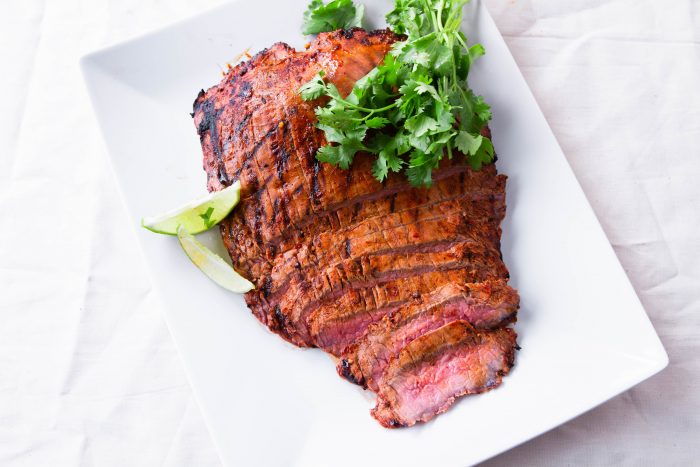
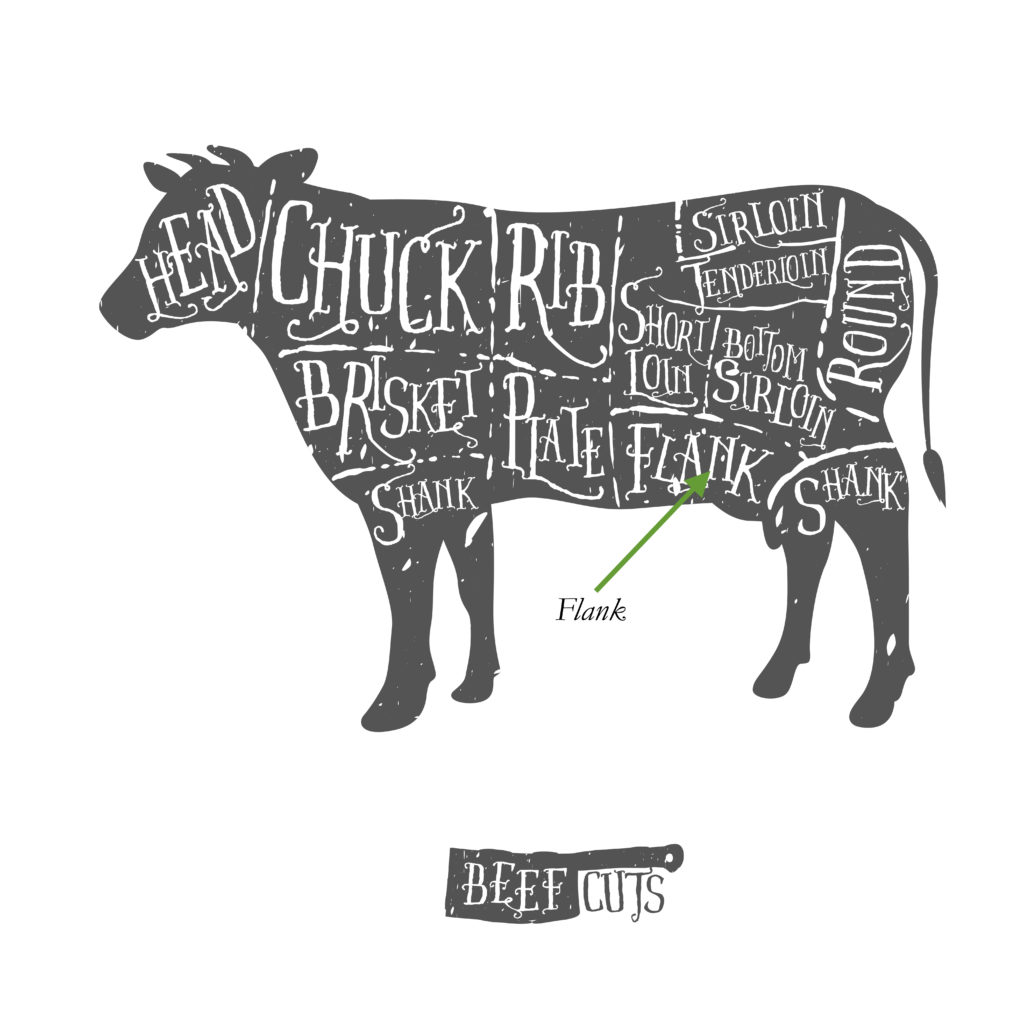
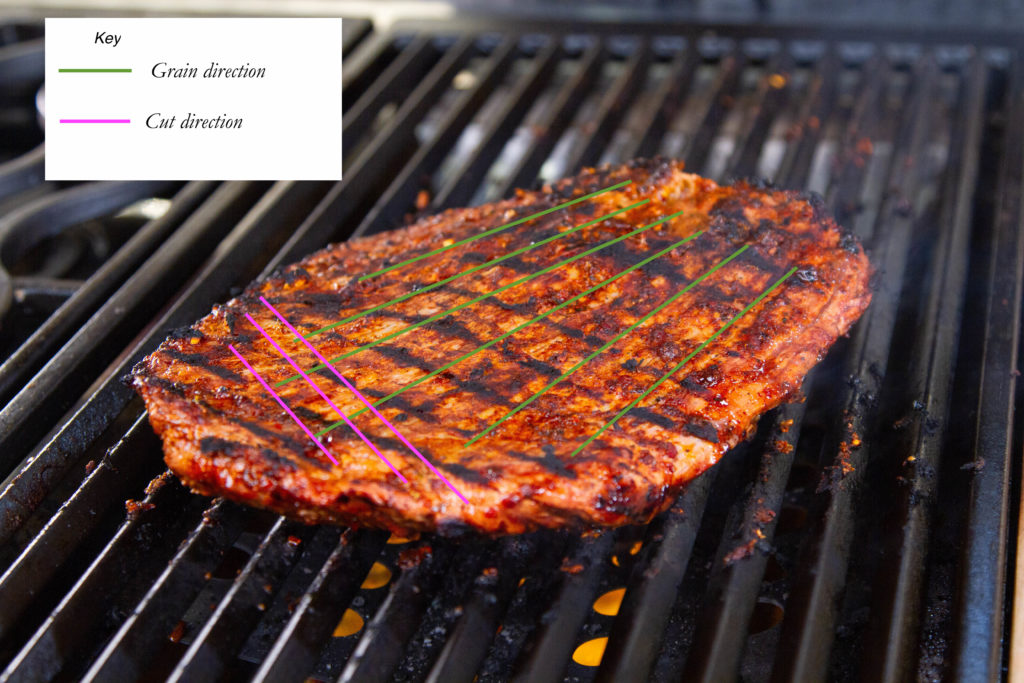
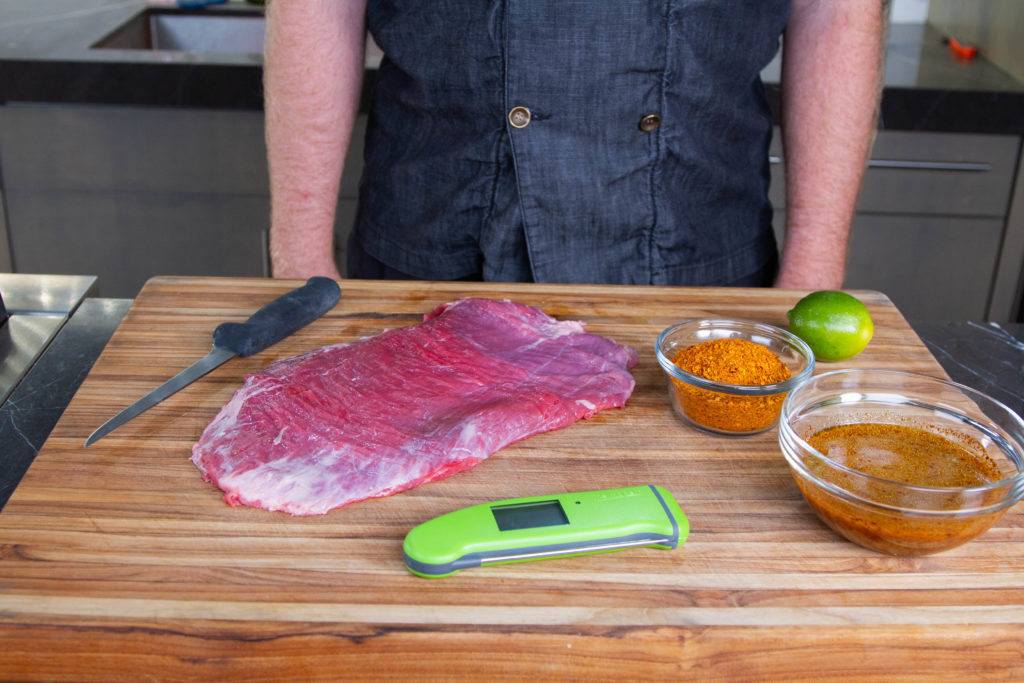



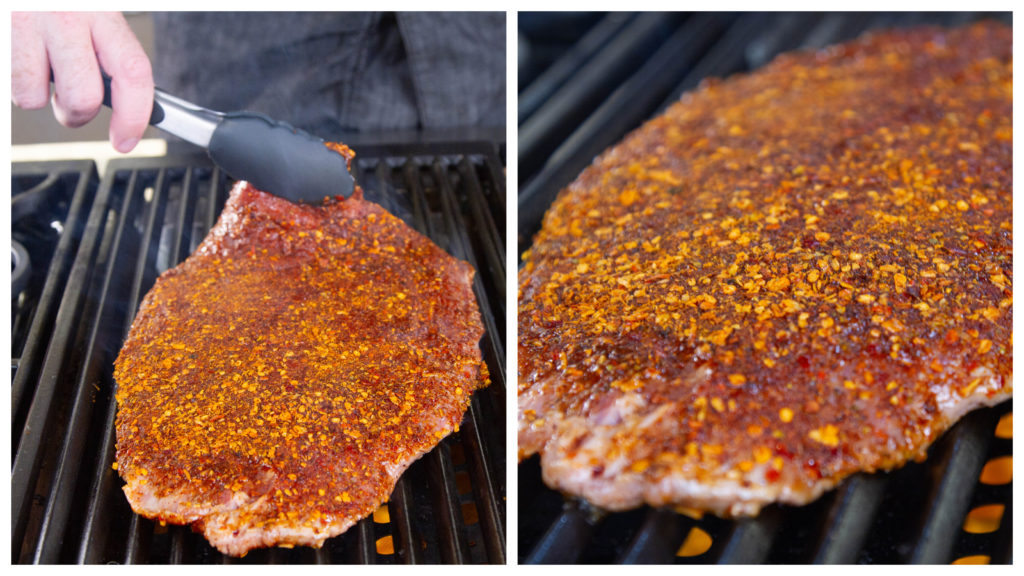

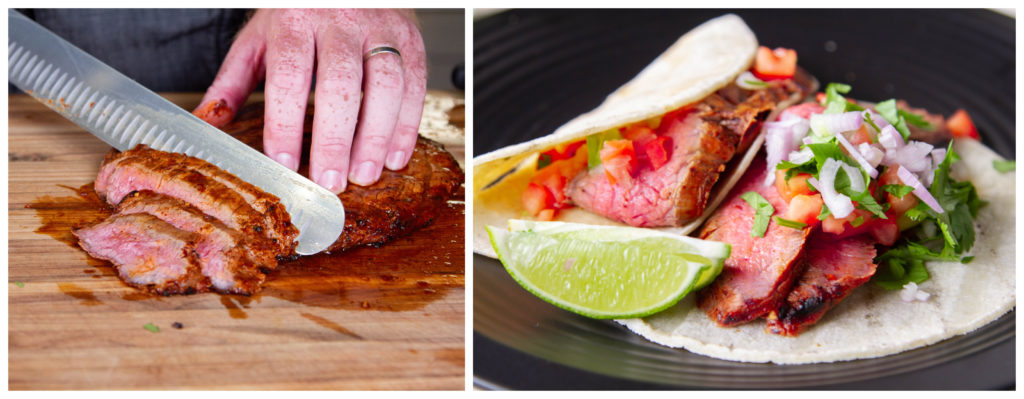
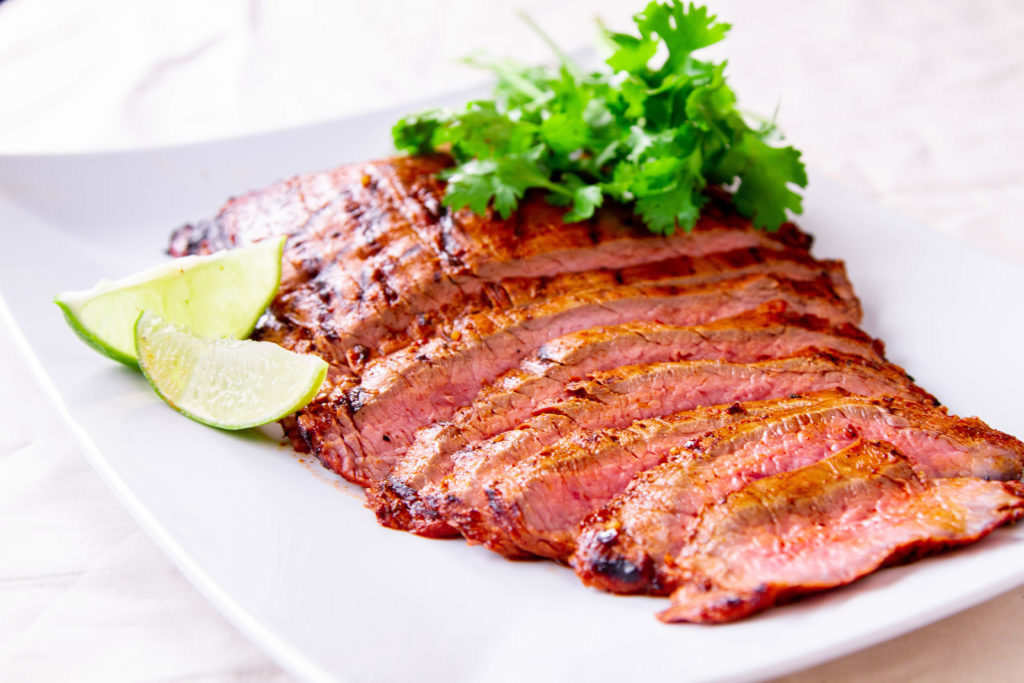

I missed the brine recipe somewhere. I’m assuming it’s salt and water.
Chipotle rub- do I make it. Is there a recipe?
Thanks
Allan,
Good question. The recipe from ATBBQ calls for a particular brand of pre-made brine mix that has chipotle in it. I didn’t want people to think they had to get that one brand, so I left it as “any brine or marinade.” We really just wanted to focus on the thermal aspects of cooking the steak itself. The thing about flank steak is that you can flavor it any way you want, but it’ll only be good if you cook it correctly. I hope that helps clear up the confusion!
Good article! We love flank steaks here, so I grill them often. I use Smoke with a probe to pull at 135 degrees with a 5 min sit. This yields pink with subtle hints of red – a tiny bit more done than in the pics above. The main difference is that I sear-n-roast flank steaks with a 2 zone process. 2.5 minutes per side over maximum heat to put some grill marks on the meat, and then indirect heat and wait for the probe to beep at 135. Comes out perfect every time, and the results are better than a straight-up sear.